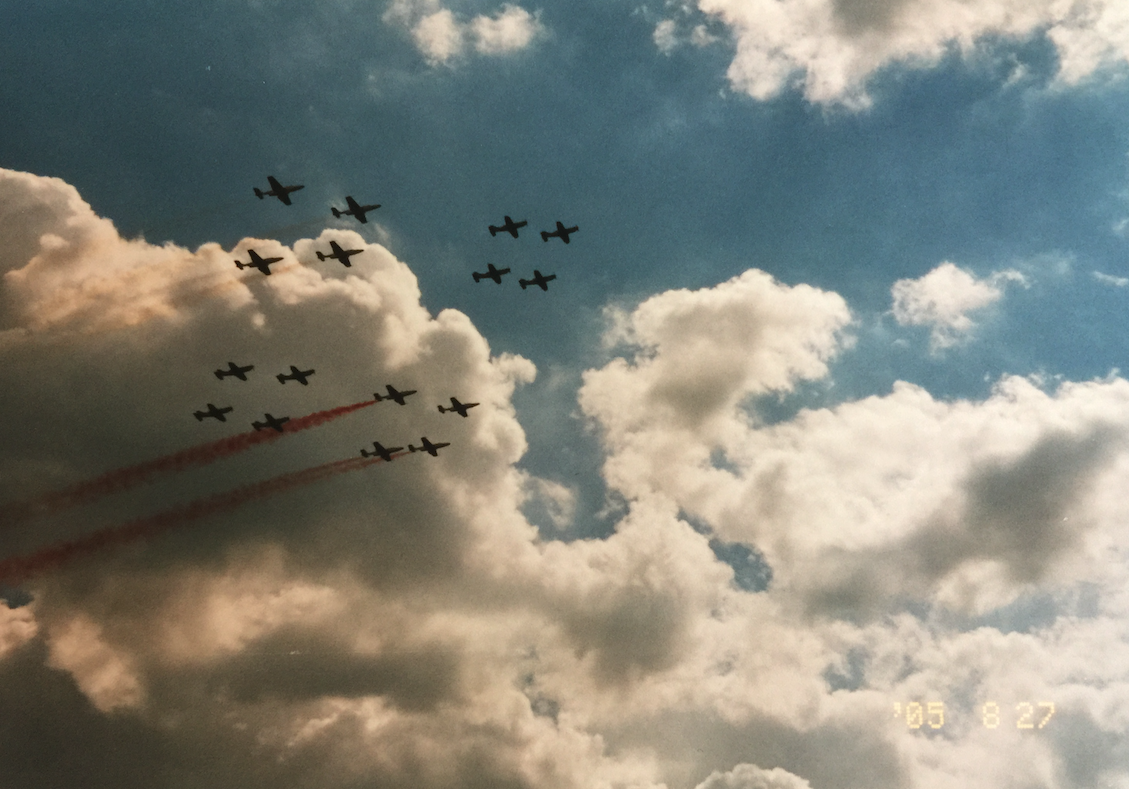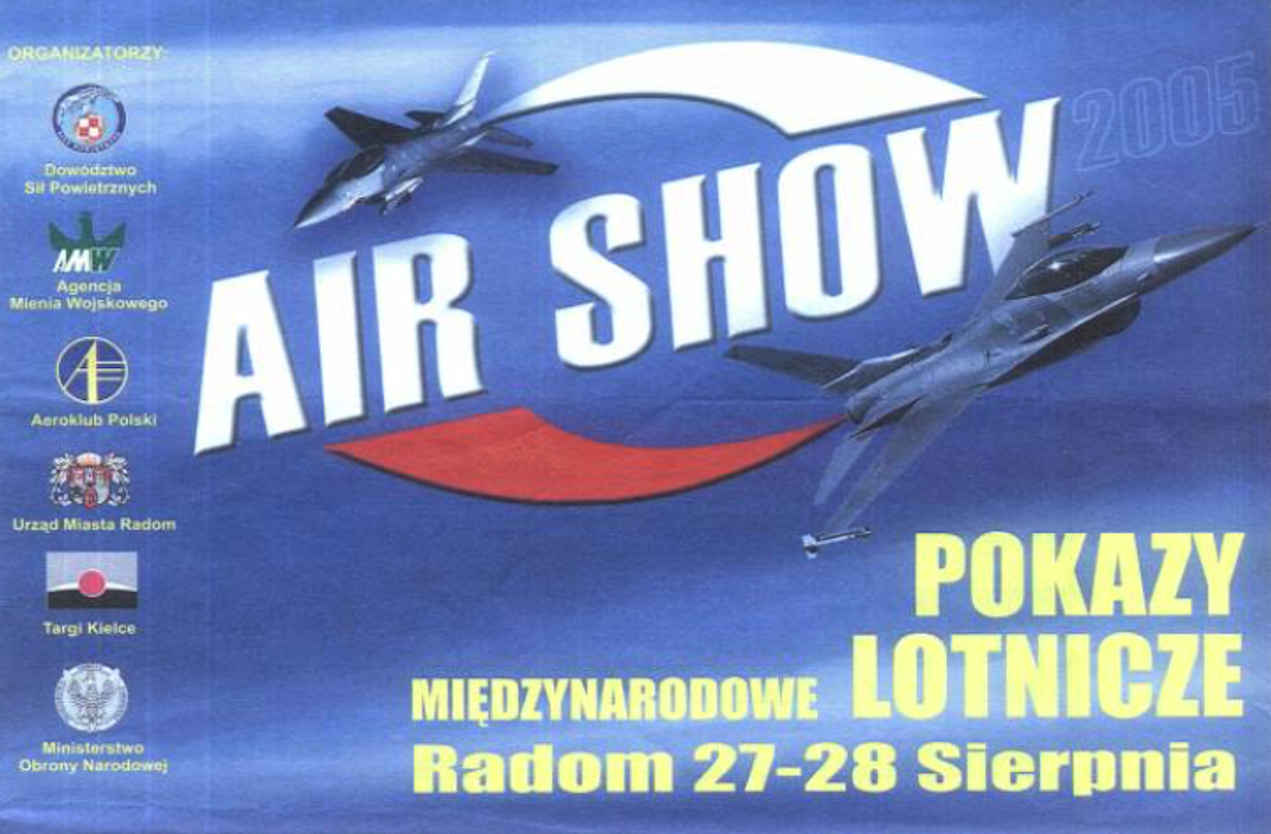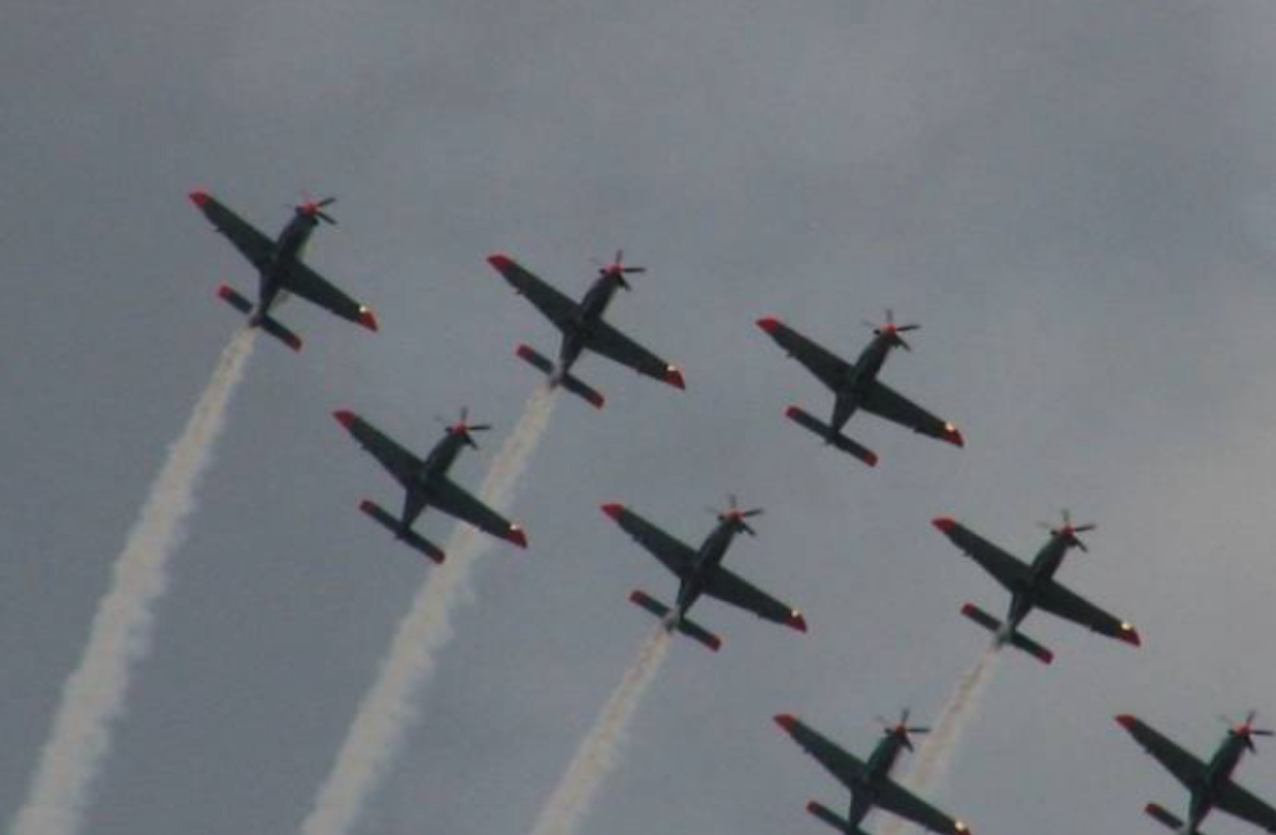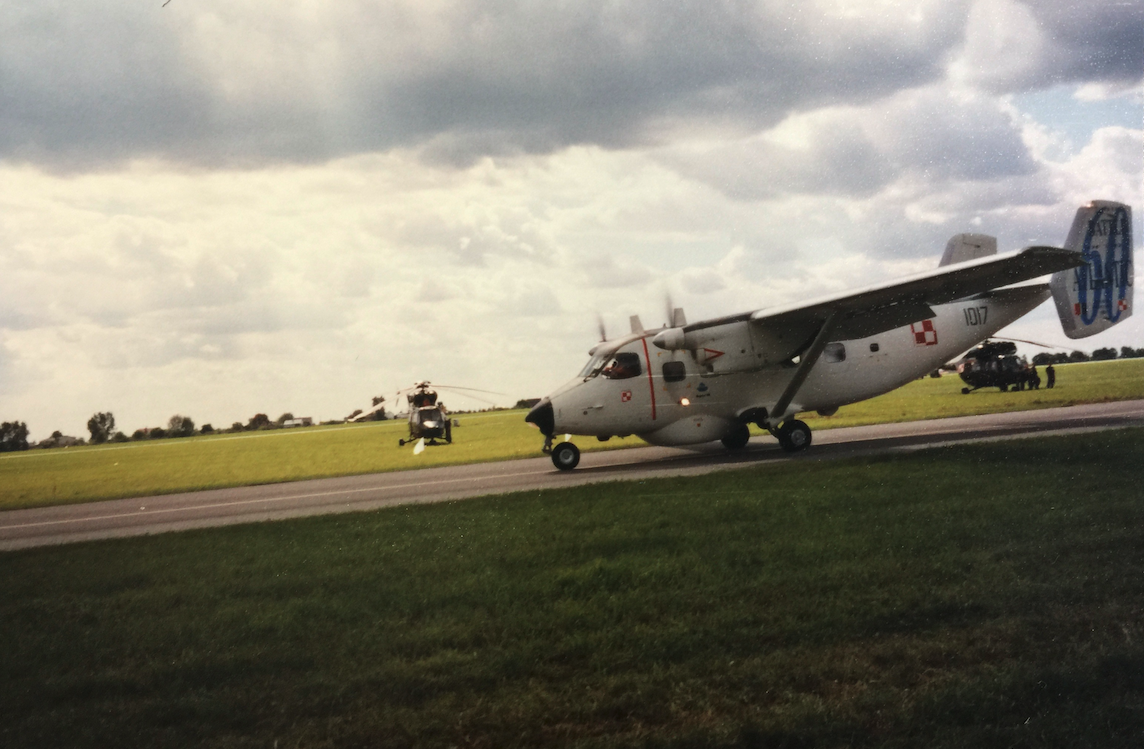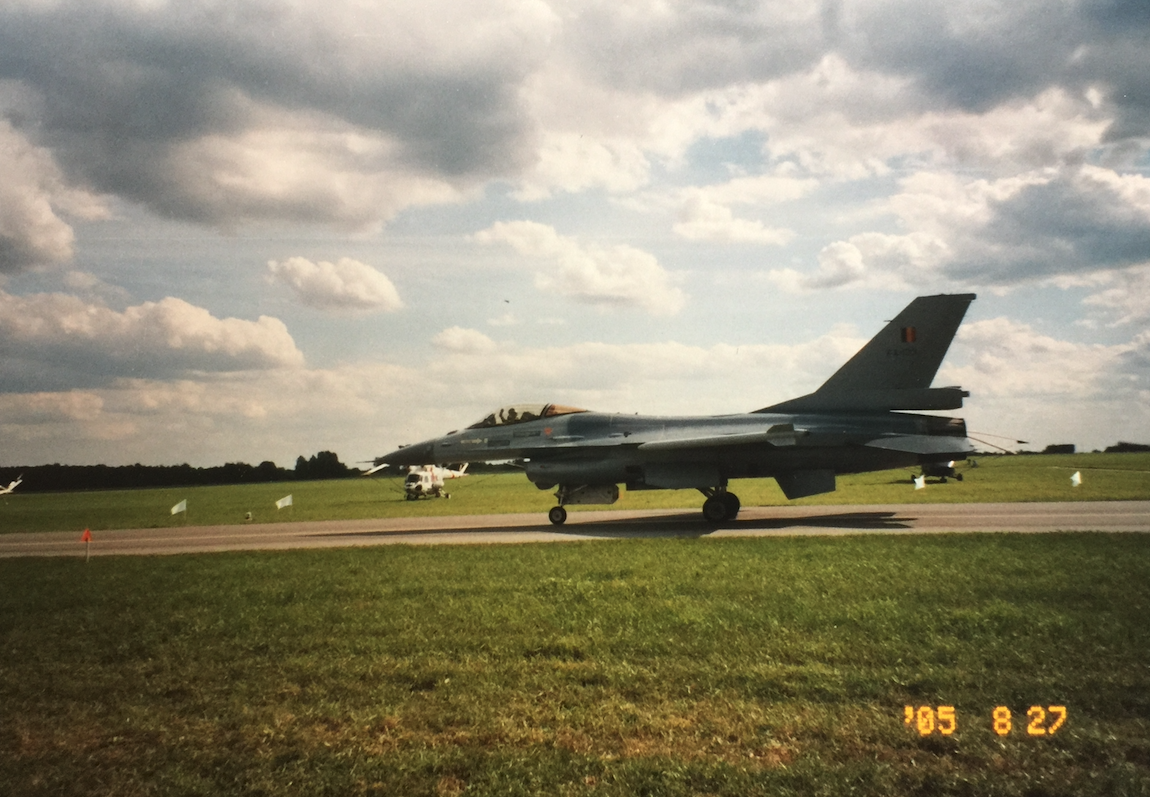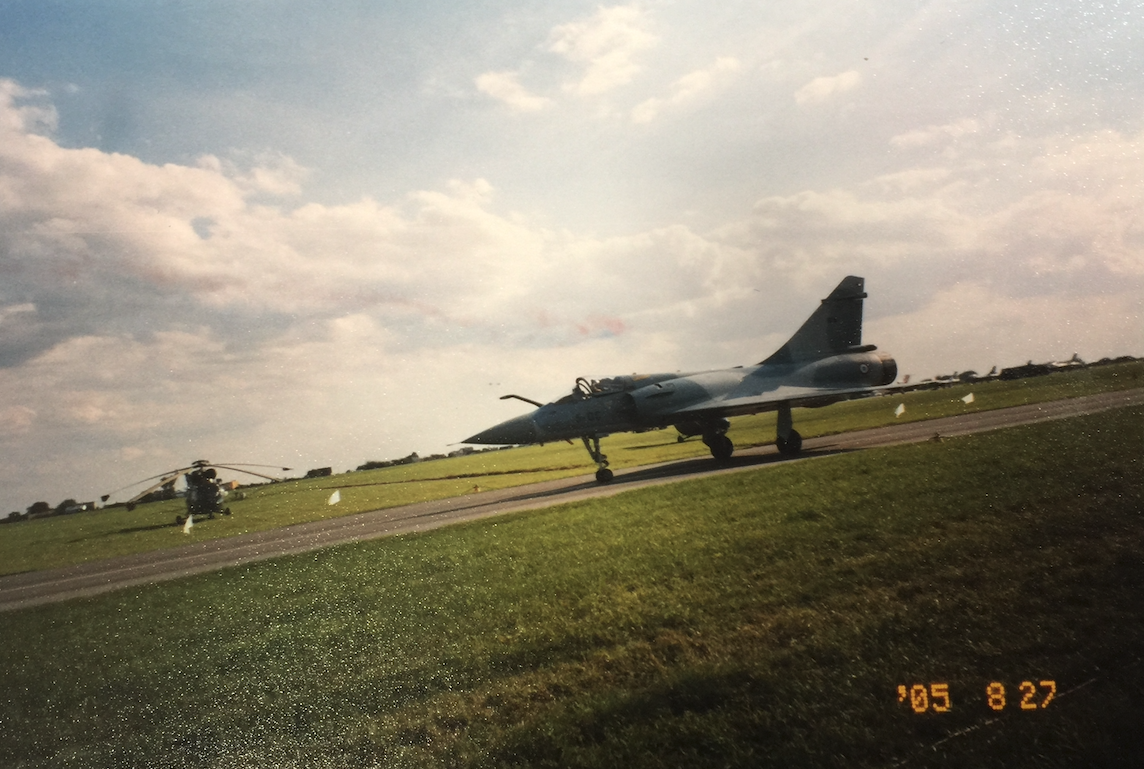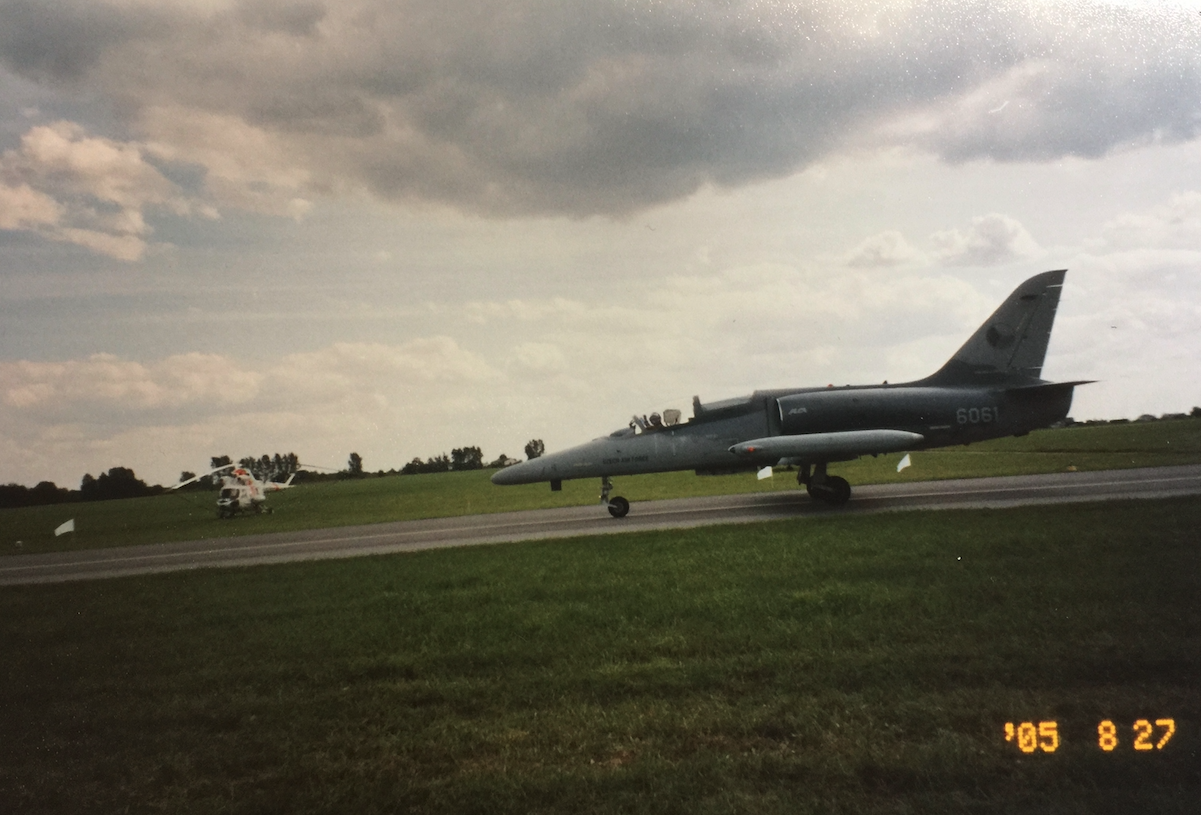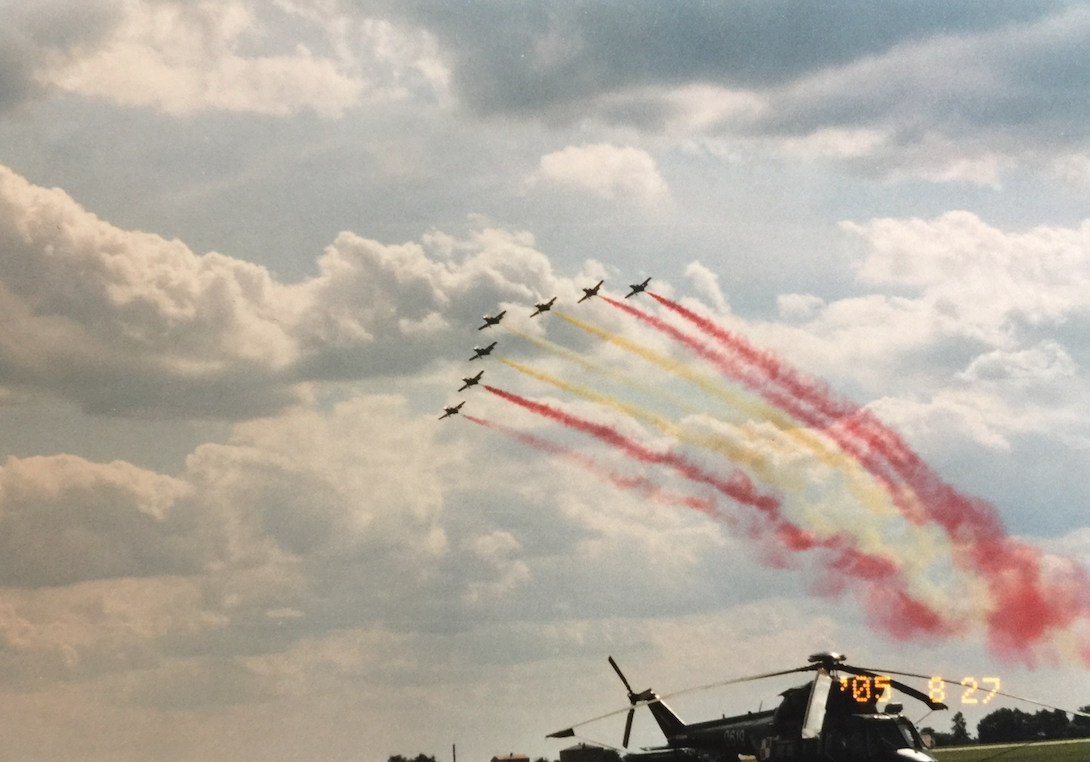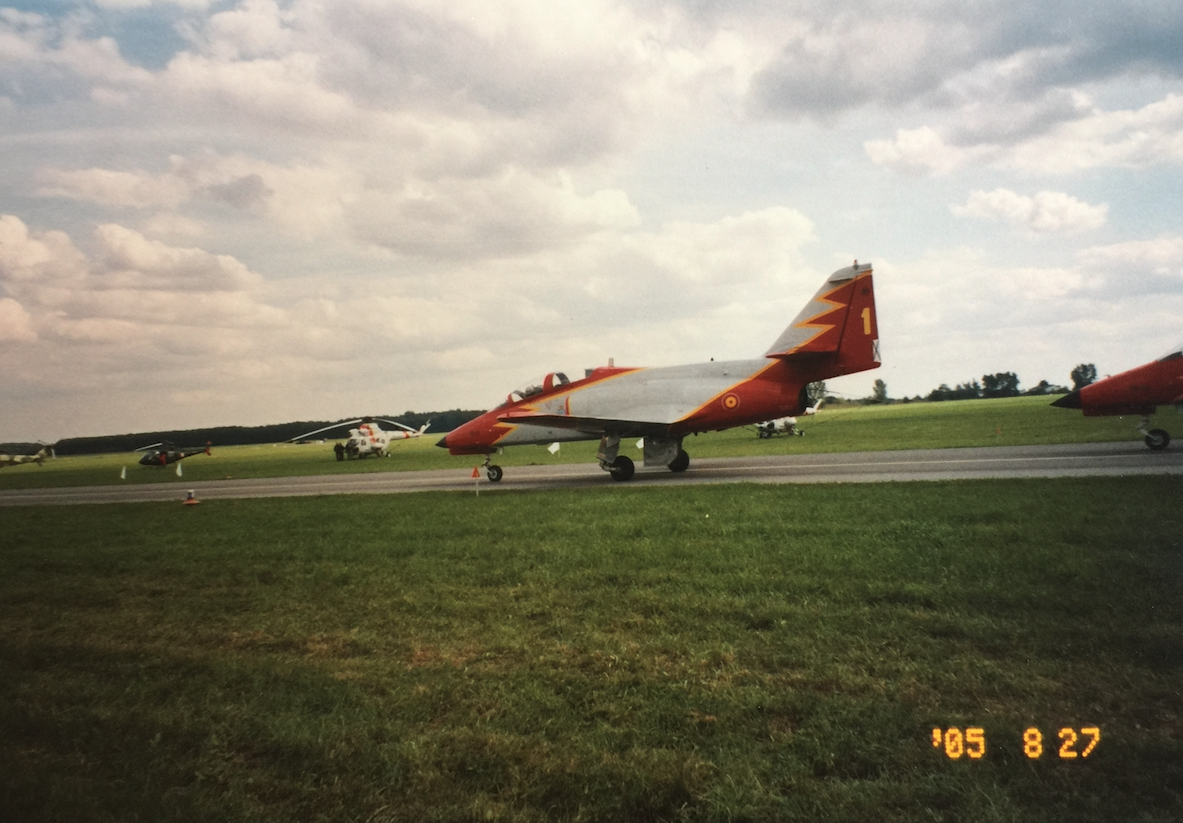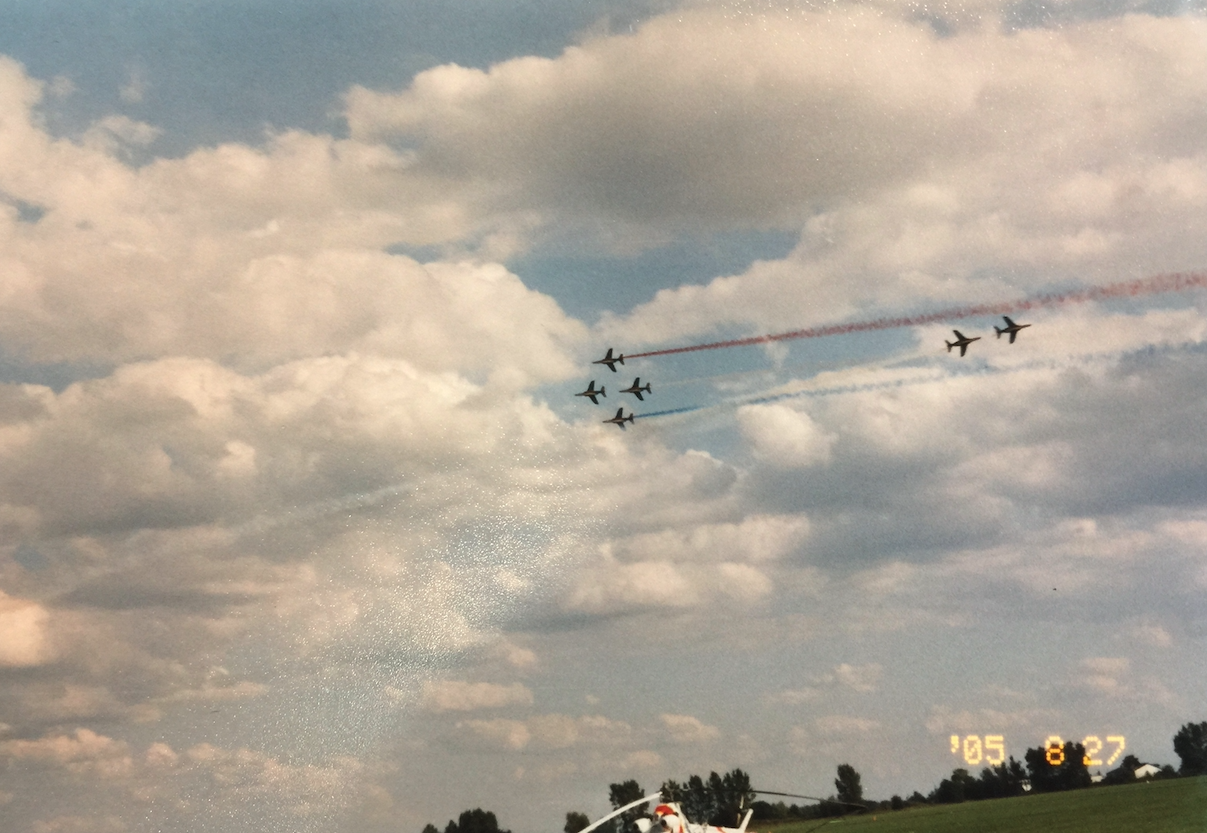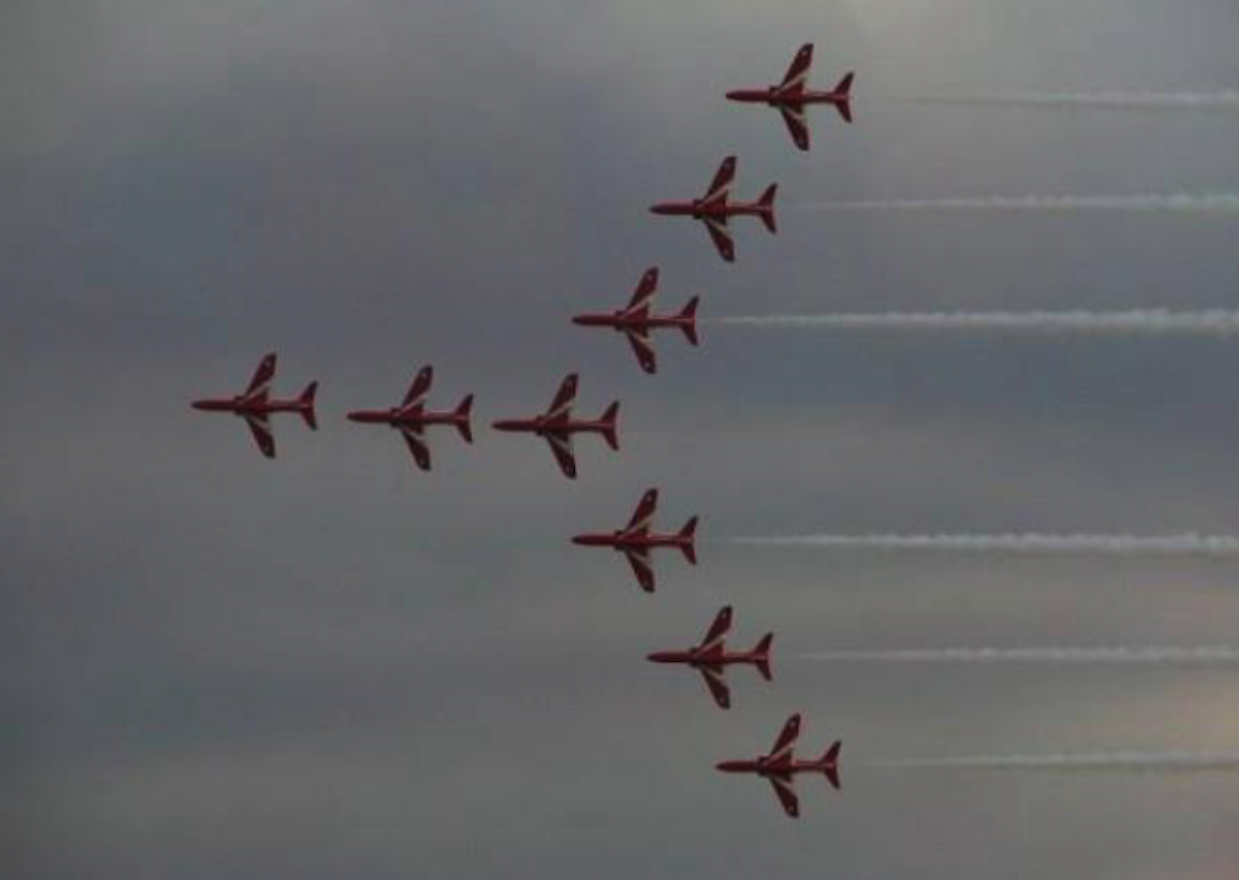Air Show IX Radom. 2005 year.
As previously agreed, more shows took place after a two-year break in Radom – Air Show 2005 (IX) Radom. The break was due to the desire to reduce costs. These events, although extremely popular, are not profitable. They were not and cannot be. Entering such an event would have to be very expensive, and then there is no need to talk about the popularization of aviation.
Once again, the organizers did very well. Everything was working properly and the weather was good on both days, the viewers and participants also did not disappoint.
The program of the shows on Saturday and Sunday was almost identical. At 9.00 a.m. the audience was greeted and static exhibitions opened. The Polish Aero Club presented itself in the air; hang gliders, paragliders, parachute landing, airplane and glider acrobatics. At 12.00 there was the official opening ceremony of the International Air Show, a parachute landing with the participants’ flags, the Airmen’s March was played, the White-Red Sparks and Orlik teams flew over the panes, and there was a short speech by the Air Force Commander. The military block began at 12:30. The shows ended at 6:00 p.m. The program of the shows was supplemented by performances by garrison orchestras from Dęblin and Radom, as well as amateur instrumental and vocal ensembles from Radom. There were exhibitions of aerial photography and reduction models.
This time, representatives of 10 countries visited Radom; Denmark, France, Spain, Lithuania, Germany, Slovakia, USA, Hungary, UK and the Republic of Poland.
The aerobatic teams should be replaced; Red Arrows (UK), Patrouille de France (France), Patrulla Aquila (Spain), Żelazny (Poland), Orlik (Poland), Biało-Czerwone Iskry (Poland), Skorpion Mi-24 D (Poland).
Aircraft on display; Su-22, MiG-29, Tornado, F-16, Mirage 2000 N, Alpha Jet, C-130 herkules, C-160 Transaal, CASA-295, L-410 Turbolet, An-2, An-26, M- 28 Bryza, Jak-40, PC-7, L-159 A / B, PZL-130 Orlik, TS-11 Iskra, M-26 Iskierka, SW-3, SW-4, Mi-2, Mi-8, Mi -24 PŁ, Mi-17, Mi-24, Kaman SH-2 G, W-3 RM Anakonda, 3Xtrim, ASH-25, Stork, C-185, CSS-13, Extra-300, Fox, Iskierka, J- 3 Wróbel, Jak-12, Jungman, Mucha 100, Piper Cup, PW-5/6, PZL-101, PZL-104 Wilga, RWD-5 r, TS-8 Bies, Tulak, Z-50 LA / LS, Z -526 AFS / F, PD-7 cell.
Patrulla Aquila team.
The Spanish band Patrulla Aquila was the star of the shows. The band made its debut on June 14, 1985. At the beginning, it had 5 planes. The band gave their first foreign show on July 16, 1986 in Koksijde, Belgium. The performance was successful and increased the team by a sixth plane for the soloist. In 1988, the team was enlarged to 7 planes, and in this composition the team flew to Radom. The group has given over 300 shows in Poland and abroad. The band Patrulla Aquila performed; Italy, France, Belgium, Israel, Malta, Slovakia, UK. The band’s performance can be divided into several parts. First, the machines start in relatively tight formations. They always recognize the weather conditions and arrange the "furniture" and only then go to the actual shows. There are flights in various compact formations, with different maneuvers. Then there is a solo part or a pair with spectacular razor-blade passes. At the end, the formation re-assembles. While flying in formation, the team performs a farewell flight, highlighted by national-colored smoke, i.e. red and yellow. It is the only band in the world that demonstrates the yellow fumes. In perfect weather conditions, the formation lands in groups. There was no such landing in Radom, and the machines touched down one by one. The show lasted about 15-20 minutes. Spaniards always register their flights, as a keepsake and for training purposes. In 2005, the team consisted of 12 pilots, 7 of which are present, and the remaining 5 are a reserve and perform maintenance and insurance functions. All pilots on the team are volunteers. In the army, they perform the functions of instructors, have at least 2,000 hours of flight time and have completed service in combat squadrons.
The Patrouille de France team.
The Patrouille de France ensemble was formed in 1953, from the merger of several smaller teams into one group. At that time, the F-84 G fighter aircraft, which entered service in France in 1951, were used. Dijon airport became the base of the national team. In 1954, the planes were changed to the Ouragan MD-450. By 1963, other fighter bases also had their own teams, which were commonly referred to as Patrouille de France. At that time, only one unit was ordered to be kept in operation. That is why 1963 is often taken as the date of establishing Patrouille de France. During this period, Mystere IV A planes were flown. Then, the training Fouga CM 170 Magister was introduced, and from 1981 until 2005, they use Alpha Jet machines. The team presents itself in the air on 9 machines. The show lasts approximately 20 minutes. The team includes pilot officers with a lifetime of at least 1,500 hours. There is a lot of people willing, so the selection is careful and organized once a year. The career in the team lasts three years, so 1/3 of the team is replaced.
The Red Arrows team.
The Red Arrows team was formed in 1965 and the first show was performed on May 6, 1965 at RAF Little Rissinton in the Cotswolds. Initially, 7 Folland Gnat planes were flown. During the first year, the band gave 65 shows. In 1968, the number of machines was increased to 9 copies. In 1980, the team switched machines to Hawk planes, which it has been flying to date (2005). These airplanes were equipped with smoke generators; white, blue and red. Smoke makes the show more attractive, but is also a great way to locate your teammates. The team chooses depending on the weather, mainly the cloud base; full display, rolling display, flat display (low show). By 2005, the band had shown up in 50 countries. In 1993, 2.5 million Americans watched the band live during a US turn.
Written by Karol Placha Hetman

